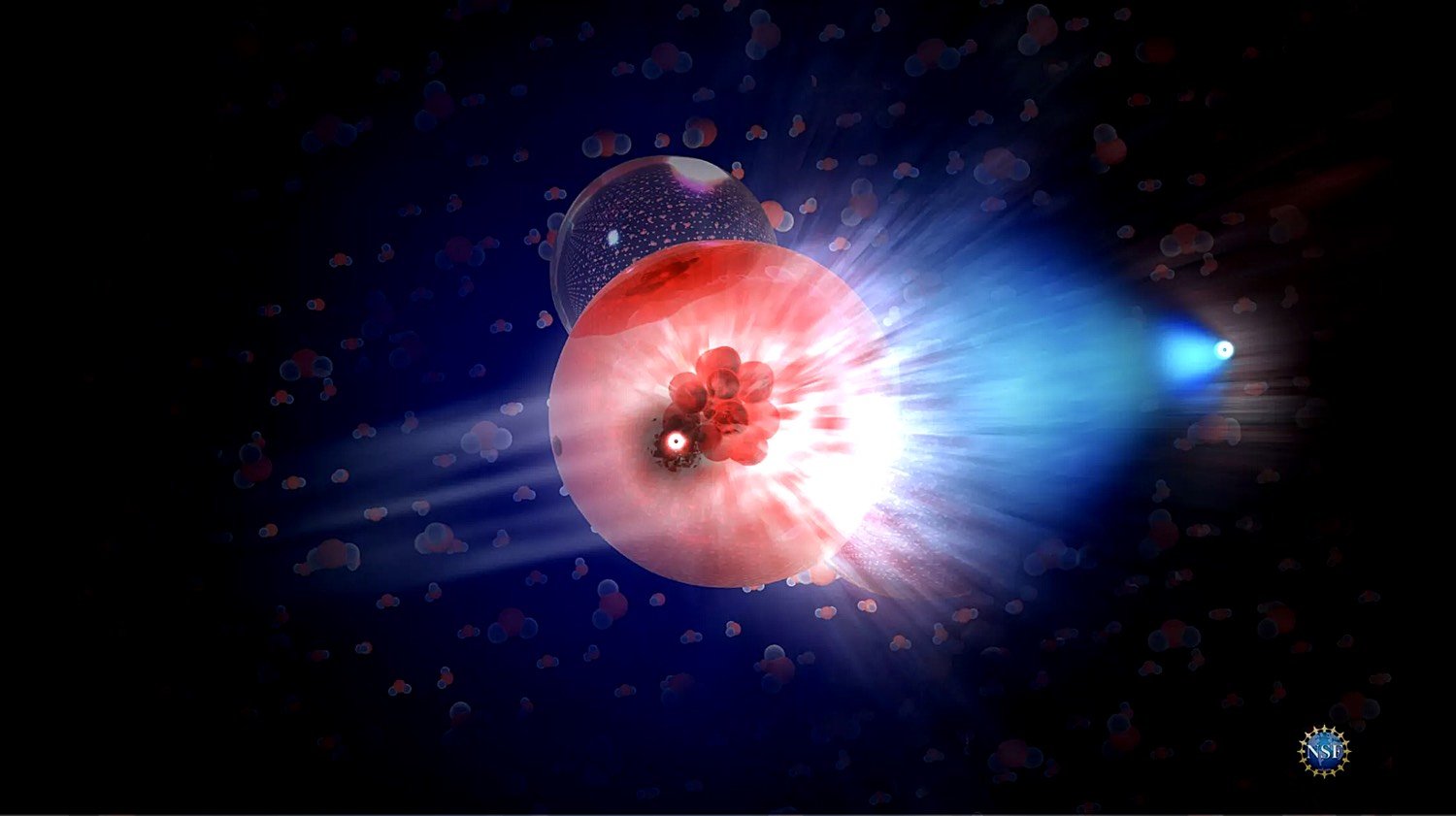Physicists at the University of California, Irvine, have reported the detection of neutrinos created by a particle collider, a breakthrough development they say will enhance our knowledge about a variety of subatomic particles which, in many ways, remain mysterious.
First detected in 1956, neutrinos are neutral subatomic particles that rarely react with normal matter. Possessing 1/2 integral spin like all fermions, they are the most abundant particle in the universe and possess close to zero mass. Neutrinos also exist in three varieties, each associated with either electrons, muons, or tau particles.
One reason physicists are intrigued by neutrinos involves the role they are believed to play in the dynamics of how distant stars, and even our sun, continually burn.
Now, scientists with the University of California, Irvine, say the discovery of neutrinos within a particle collider could help to reveal more about the cosmic neutrinos that traverse long distances in space and eventually collide with our planet. The discovery may also potentially convey new insights into the dynamics of remote corners of our universe, and may even help to shed light on one of the great mysteries of modern physics: dark matter.
The discovery marks the latest development in the ongoing Forward Search Experiment, or FASER, an international collaboration based at CERN in Geneva, Switzerland, where the team built the FASER particle detector to collect information on particles produced by the facility’s famous Large Hadron Collider (LHC).


Most of the massive particle detectors at the CERN facility dwarf FASER, which weighs about half as much as an average-sized car and fits within a small tunnel at the facility. By comparison, the facility’s ATLAS detector stands several stories high and weighs thousands of tons more than its smaller sibling, which only took a few years to build and is comprised mostly of spare parts recycled from other experiments.
According to the FASER Collaboration members, their discovery represents the first detection of neutrinos under such conditions. The announcement was made over the weekend at Italy’s 57th Rencontres de Moriond Electroweak Interactions and Unified Theories conference.
UC Irvine particle physicist and FASER Collaboration Co-Spokesperson Jonathan Feng said in a statement released by the university that the team “discovered neutrinos from a brand-new source – particle colliders – where you have two beams of particles smash together at extremely high energy.”
FASER Co-Spokesperson Jamie Boyd, who is also a particle physicist at the CERN facility, confirmed that “no neutrino produced at a collider had ever been detected by an experiment” and that the team’s discovery is the first known instance.
UC Irvine has a long history of involvement with work related to neutrinos, which despite their abundance in our universe, still remain mysterious. One of their co-discoverers, Nobel laureate and UC Irvine professor Frederick Reines, was part of the team that discovered the particles seven decades ago, along with UC Irvine physicist and astronomer Hank Sobel.
Although most neutrinos detected by physicists are low-energy particles, by comparison, the FASER team reports that the neutrinos detected in Switzerland are the highest energy ever produced under lab conditions, which they liken to those detected during showers of particles that bombard Earth’s atmosphere as a result of particle emissions emanating from deep space.
“These very high-energy neutrinos in the LHC are important for understanding really exciting observations in particle astrophysics,” Boyd said, adding that the FASER team’s observations may be able to reveal intricacies of the physics of deep space “in ways we can’t learn otherwise.”
Previously, neutrinos had been the only variety of particles that hadn’t been detected during larger experiments at the LHC.
UCI experimental physicist Dave Casper said in a statement that FASER’s observations of the neutral particles show that “the collider’s full physics potential is finally being exploited” and that such observations may even help reveal clues to the composition of dark matter, believed by physicists to make up most of the matter distributed throughout the universe.
Currently, the FASER project boasts more than 80 researchers located both at UCI and at 21 partner institutions. While dark matter remains a mystery, a new series of experiments scheduled to occur at the LHC in the months ahead could make additional detections that may ultimately help determine more about this mysterious, nonluminous material.
Boyd says the FASER team is hoping to see “some exciting signals” which ultimately may help physicists better understand the most abundant—and one of the most mysterious—particles in the universe.
Micah Hanks is the Editor-in-Chief and Co-Founder of The Debrief. He can be reached by email at micah@thedebrief.org. Follow his work at micahhanks.com and on Twitter: @MicahHanks.

